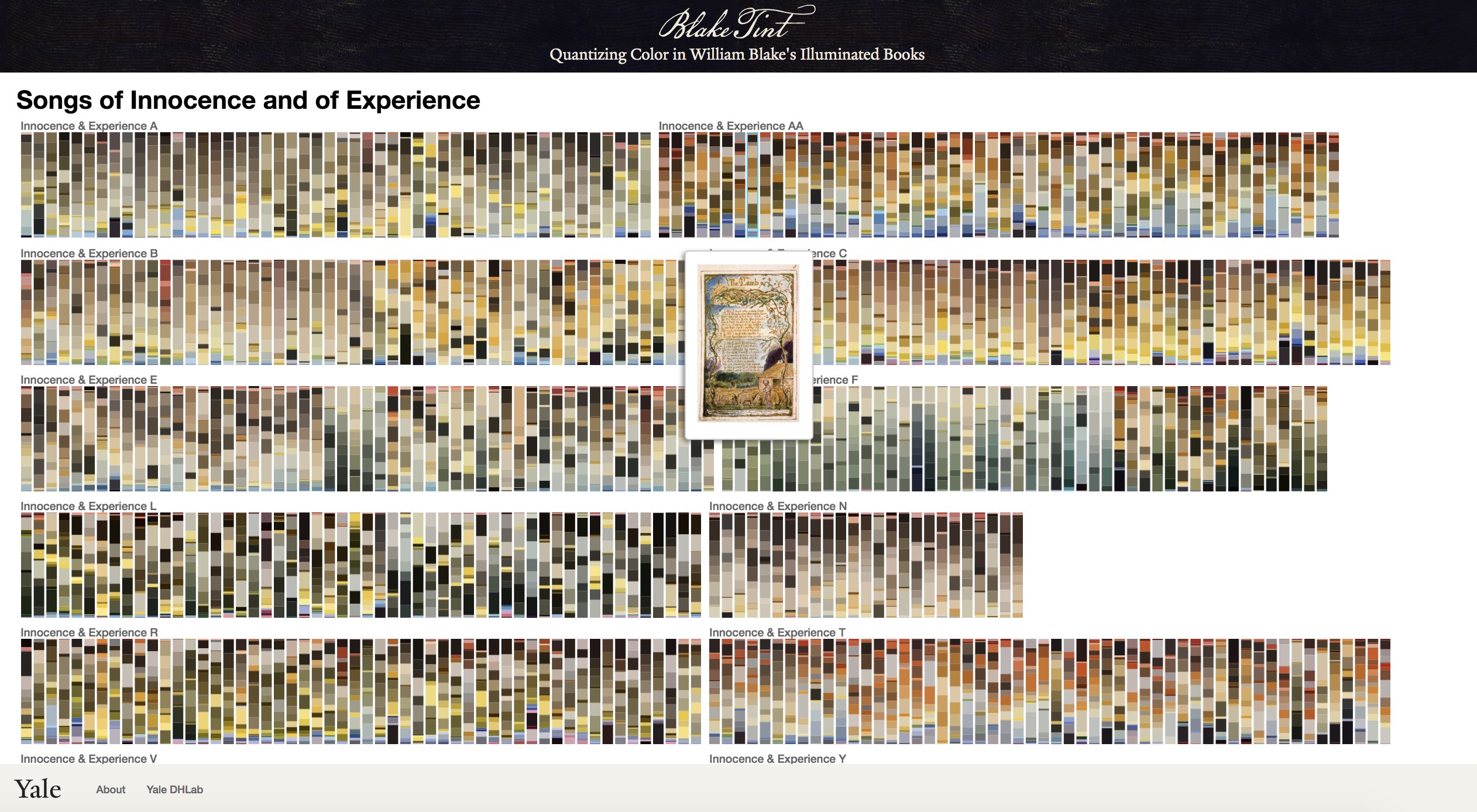

Quantizing Color in William Blake’s Illuminated Books
William Blake’s Color Theory
Quantizing Color in William Blake’s Illuminated Books studies the artistic output of the Romantic poet and painter, William Blake (1757-1827). Blake invented a complex process of etching and printing, a system he called “illuminated printing.” His “infernal method” consisted of using an acid-resistant substance to mirror-write onto a plate of copper, which he then etched, printed, and reprinted. Throughout his lifetime, Blake would re-ink the same plate, using different colors every iteration, giving each copy with its own distinctive feel. This project wishes to study, on a micro- and macro-level, the changes Blake made to his plates over time in order to better understand his use of color and affect.
The visualizations in BlakeTint give us fresh ways of looking at Blake’s manuscripts, providing new angles into understanding his complicated relationship with color.
On a macro-level, users can track:
- how Blake’s color palette changes across the course of one book (from plate-to-plate)
- how Blake’s coloring of one book changes across copies (sorting by book)
- how Blake’s general color scheme across all his books progresses over time (sorting by date).
On a micro-level, you can:
- spot minute differences and alterations Blake made to a single plate, using a sliding tool that compares two copies of the same image
- compare color palettes of two plates, bar-for-bar, side-by-side
- view a plate’s color palette multiple ways: equal-sized, proportional, and hue-only
- examine what the computer “sees” when it removes the background color from each plate and extracts the remaining color palette.

Contact
BlakeTint will be launching for public use shortly. Contact Sarah Weston with any questions about the site or underlying research.
This project was awarded a Digital Humanities Lab Rapid Prototyping Grant in 2019-2020.